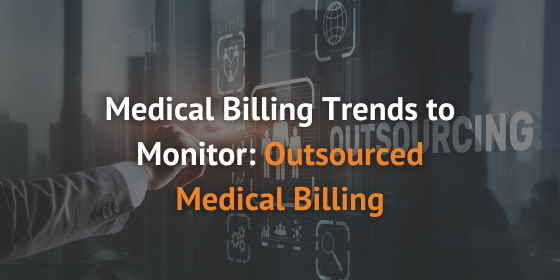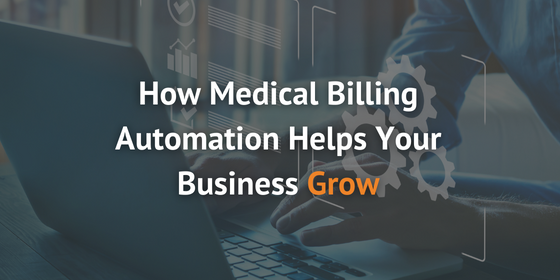
May 1, 2023 | Electronic Billing, EZClaim, Medical Billing Software Blog
Another rapidly growing trend in the medical billing industry is the emergence of web-based or “cloud-based” software. As practices and billing firms (RCMs) alike look to become more efficient and better control the billing process, organizations are switching to web-based softwares as an integral part of that mission. Let’s dive into some of the key factors fueling the rise of web-based medical billing software.
1. Accessibility
A major draw of web-based medical billing software is that it can be accessed from anywhere with an internet connection, allowing practitioners to work remotely or from multiple locations. This enables quick connection for everyone involved in the medical billing process. As you have access to the internet, you are connected to your billing process, whether you’re at home, at the office, or on a tropical island.
This visibility is remarkably valuable to businesses, and also allows for improved patient treatment. Clinicians can access patient health data from anywhere, and can rest assured that all the information they are looking at is up to date. It is in the best interest of any practice looking to improve the patient experience and effectiveness of care to ensure their software makes information as readily available as possible.
Using a web-based software also enables you to hire billers from anywhere in the world. Since your data can be easily accessed, you aren’t limited in terms of who you can hire (from a geographical perspective).
2. Automatic Updates
Web-based medical billing software is updated automatically, eliminating the need for manual updates and ensuring that practitioners are always using the latest version. As the software evolves and receives a more robust feature set, your organization will reap the benefits without any cumbersome steps needed.
3. Scalability
Web-based medical billing software can easily be scaled up or down depending on the needs of your practice/RCM, making it more flexible and adaptable than traditional software. If you intend on growing and processing more claims, you need a software solution that is able to grow with you. Using a web-based software ensures your practice won’t be held back by its software.
Additionally, your business won’t need to spend money up-front on servers, an IT department, and hardware. A cloud-based solution simplifies your operations, and makes it easier to scale.
Web-based software tends to be easier to use and more intuitive than traditional software. You won’t need highly-specialized training in-person training from an in-house team member, as cloud-based software typically provides comprehensive onboarding to ensure you’re ready to go as quickly as possible.
4. Collaboration
Web-based medical billing software allows multiple users to work on the same project simultaneously, facilitating collaboration and improving communication among team members. This improves overall operational efficiency, and allows you to process more claims in less time.
5. Security
Web-based medical billing software providers typically offer data encryption and other security measures to ensure patient information is kept confidential and secure.
Another key security benefit of web-based software is the peace of mind it provides from a data backup perspective. If you are using a traditional software, and are faced with an unfortunate situation like a fire or other disaster that damages your office or hardware, you are at risk of losing all of your records. Storing your data on the cloud ensures it cannot be lost, and is with you wherever you have internet connection.
If your business is exploring the possibility of switching to a web-based software, we’d love to chat with you. Schedule time to meet with our team so we can discuss your needs and how EZClaim can help.

Apr 24, 2023 | Electronic Billing, EZClaim, Medical Billing Software Blog
Welcome to the start of a new series, where we discuss some prevalent medical billing trends, and what they mean for your organization! Let’s start off this discussion with the concept of practices outsourcing their medical billing. This trend has skyrocketed in popularity over the last decade or so, and isn’t going away anytime soon. So, why do practices outsource their billing function? Let’s analyze a few key reasons.
1. Specialization
Medical billing requires extremely specialized knowledge of complex billing codes, regulations, and compliance requirements. Outsourcing to a dedicated revenue cycle management firm ensures you have the most highly-trained professionals in your corner handling your practice’s billing, and is a good way to promote more accurate billing and timely revenue cycle management. Many practices try to get by with novice billers, and the results are often disastrous. By outsourcing revenue cycle management, you delegate your billing to the most qualified experts, which is quite attractive to many practices.
2. Potential Cost Savings
Another major reason practices look to outsource medical billing is to take advantage of potential cost savings. By outsourcing your revenue cycle management, healthcare providers can avoid the costs of hiring and training a high-level in-house billing staff, purchasing billing software and equipment, and maintaining an infrastructure to support billing operations.
However, it is important to note that when you outsource, you tend to get what you pay for. If you choose a lower-cost outsourcing provider, you will likely receive lower-quality services, which can cause substantial problems downstream. If you partner with a top-of-the-market provider, you may not be realizing any up-front cost savings at all, but will have a better team in your corner. It is critical that you keep this calculus in mind when deciding whether outsourcing is the right choice for you.
3. Increased Efficiency
The opportunity for increased efficiency is another major reason practices look to partner with outsourced revenue cycle management companies. Outsourced billers often have more streamlined processes and technology than individual healthcare providers. This can result in more timely claims processing and payments, reducing the time and effort required to manage billing operations. Better processes also means increased accuracy, and helps you increase revenue.
Additionally, when you take RCM off your practice’s plate, you also reduce incoming calls to your office, freeing up your staff to handle other tasks that more directly affect patient care and improving the patient experience. When outsourcing billing, you also won’t need to worry about any interruptions to billing if a member of your internal team calls in sick, goes on vacation, or resigns.
4. Compliance
Lastly, the issue of compliance. Medical billing companies stay up-to-date with constantly changing healthcare regulations and compliance requirements. It can be easy for your staff to fall behind, especially if they have other tasks on their plate. By outsourcing, healthcare providers can often reduce their risk of non-compliance penalties and lawsuits.
Why Do Your Own Billing?
So, with all of this in mind, what’s the argument for doing your own billing?
First and foremost, control. If you outsource your billing, your RCM partner becomes an extension of your practice, and plays an integral role in the way in which your practice is perceived. If your billing partner starts missing the mark, that reflects negatively on your practice in a way you really cannot control.
There is also the issue of complete dependence. If a practice dissolves its RCM staff and completely outsources the function, it becomes completely reliant on its billing partner. What happens if your billing partner goes out of business, and you don’t have any in-house staff capable of overseeing billing?
Outsourcing the billing process also causes your practice to lose some visibility in regards to reporting and data, which can make the path to improvement considerably less clear. Make sure you are closely monitoring timely filing of claims, days in A/R, timely reimbursement, appropriate reimbursement, and ensuring timely follow-up on denials to ensure your billing partner is hitting the mark.
As we touched upon earlier, there is the issue of quality, as well. When organizations outsource, they are typically looking to realize cost efficiencies. However, when you choose lower-priced outsourcing options, you may recognize cost-savings up-front, but your billing quality may suffer, potentially damaging your relationship with your patients. Many outsourcing organizations also make use of overseas staff, and there can be a bit of a language barrier at times. This can occasionally frustrate patients calling in to check on their bills.
Lastly, there’s the issue of confidentiality and security. You are passing over protected health information or PHI to a third party that is not your practice, or insurance. You must be sure your patients are aware of this movement of data, and that your billing partner takes proper compliance measures to ensure your patients’ data is protected (signing a BAA is a must).
What Does This Mean For Your Business?
As a medical practice, you must carefully weigh the pros and cons of outsourcing billing. If you are struggling to tackle billing on your own, outsourcing may make sense (check out some of our partners)! However, if you are doing a good job billing internally, there is likely no need to outsource this process unless considerable cost savings can be realized, without seeing a dip in quality. Investing in your own team is never a bad decision. By equipping them with great software and providing expert training, you can get exceptional results from internal billing. Always keep your options open, and realize that outsourcing is not a fit for every practice.
If your organization is looking to get the most out of its medical billing process, we can help. EZClaim has been the medical billing software of choice for practices and RCM firms alike for over 25 years. If you are interested in learning more about how we can help your business improve its billing capabilities, schedule some time to meet with our team!

Apr 17, 2023 | Electronic Billing, EZClaim, Medical Billing Software Blog
The healthcare industry increasingly relies on electronic payment systems to process transactions in today’s digital age. This includes everything from automated medical billing systems to online patient payment portals. However, with the increased use of electronic payments comes a higher risk of security breaches and data theft. That’s where payment tokenization comes in.
What is Payment Tokenization?
Payment tokenization is a security measure that involves converting sensitive payment information (such as credit card numbers) into a secure token. This token is a unique, randomly generated string of characters that represents the original payment information. The tokenization process takes place on a secure server, which a payment tokenization provider manages. The importance of payment security in the healthcare industry cannot be overstated. Medical practices handle sensitive personal and financial information daily, and any breach of this information could have serious consequences for the practice and its patients. Payment tokenization helps to protect against these risks by providing an extra layer of security for electronic payments.
How Payment Tokenization Works
The payment tokenization process begins when patients provide payment information to a medical practice. This information is then sent to the tokenization server, which converts it into a secure token. The token is then used to process the payment rather than the original payment information. This helps to protect sensitive data from potential breaches or theft. The tokenization server plays a crucial role in the process, as it generates and manages the secure tokens. The server is also responsible for decrypting the tokens when it is time to process the payment. This ensures that the original payment information remains secure throughout the transaction.
The Benefits of Payment Tokenization for Medical Offices
Payment tokenization offers several benefits for medical practices, including:
Enhanced Security
Payment tokenization is an effective way for medical practices to enhance the security of their electronic billing systems. By converting sensitive payment information into secure tokens, payment tokenization helps to protect against data breaches and theft. This is particularly important in the healthcare industry, where personal and financial information is often sensitive and at risk of being compromised. Tokenization helps to safeguard the information of both the medical practice and its patients by ensuring that sensitive data is not stored in a way that is easily accessible to unauthorized parties. This helps to reduce the risk of data breaches and can help medical practices to comply with industry regulations and standards, such as the Payment Card Industry Data Security Standard
(PCI DSS).
Enhanced User Experience
Tokenization helps improve the overall payment experience for patients. This is because tokenization allows for automated billing, which can be particularly helpful for medical practices with high patient volumes. For example, if a medical practice uses a traditional payment system, patients may be required to fill out lengthy forms and provide sensitive payment information each time they make a payment. This can be time-consuming and inconvenient for patients. With payment tokenization, however, patients can make payments more quickly and easily by simply providing their payment information once and using a secure token for all future payments. This enhanced payment experience can be particularly beneficial for medical practices that rely heavily on electronic billing systems, as it can help to reduce the number of payment-related issues that arise and improve patient satisfaction.
Improved Compliance
Payment tokenization helps medical practices to comply with industry regulations and standards. For example, the PCI DSS requires that sensitive payment information be stored securely. Tokenization helps to meet this requirement by reducing the amount of sensitive payment information stored on the medical practice’s systems. Tokenization can also help medical practices comply with other regulations and standards relevant to their specific industry. For example, medical practices may be required to comply with HIPAA regulations, which outline requirements for protecting personal health information. By using payment tokenization, medical practices can help ensure that they comply with these regulations and standards.
Implementing Tokenization in a Medical Office
If you are a medical practice looking to implement payment tokenization, there are a few key steps you should follow:
– Choose a payment tokenization provider: The first step is to choose a payment tokenization provider that meets your needs. This should be a reputable provider with a proven track record in the healthcare industry.
– Integrate with existing payment systems: You will need to integrate the payment tokenization system with your existing payment systems. This will typically involve working with your tokenization provider to ensure that the integration process goes smoothly.
– Train staff: It’s important to ensure that your staff is familiar with the payment tokenization process, as they will be responsible for handling patient payments. This may include training on how to use the new system and any relevant industry regulations.
Best Practices for Using Payment Tokenization in a Medical Office
To ensure the security and effectiveness of payment tokenization in your medical practice, it’s important to follow a few best practices:
– Keep tokens secure: It’s essential to keep the tokens generated by the tokenization server secure at all times. This includes properly storing and handling tokens and regularly updating your tokenization system to ensure it is up to date with the latest security measures.
– Complying with industry regulations and standards: Payment tokenization can help medical practices comply with industry regulations and standards. It’s important to stay up to date with these requirements and ensure that your payment tokenization system meets all necessary requirements.
– Provide a seamless payment experience for patients: Finally, it’s important to ensure that the payment experience for patients is seamless and efficient. This may involve integrating the payment tokenization system with your patient portal or other online payment portals and offering multiple payment options (such as credit card, debit card, or electronic check).
Unlock the Power of Tokenization with EZClaim & BillFlash
Payment tokenization offers several benefits for medical practices, including enhanced security, improved compliance, and enhanced user experience. If you are a medical practice looking to streamline your payment processing procedures and increase efficiency, consider implementing payment tokenization with reputable providers such as EZClaim and BillFlash, a NexTrust service. EZClaim integrates with BillFlash to provide a powerful end-to-end suite of billing and payment solutions for medical practices, including BillFlash Pay Services powered by EZClaimPay. Schedule a free consultation today to discover how together EZClaim and BillFlash can streamline your billing process, increase revenue, and improve patient satisfaction.
The medical billing process is as important to your business as it is tedious for those who aren’t making proper use of automation. Automating parts of the medical billing process not only makes your process more efficient but more accurate, resulting in smoother operations for your entire business.
At EZClaim, our goal is to help your business reach its full potential with medical billing software. We make automation easy and provide a centralized home for all of the critical information you need to run your business that seamlessly integrates with your other tools and technology. Request a free consultation today to learn more about how EZClaim can help your business grow.

Mar 17, 2023 | Electronic Billing, EZClaim, Medical Billing Software Blog
Looking to grow your medical practice or RCM organization? Taking steps towards automating the billing process is an excellent place to start. From improving the efficiency of your claim processing, to making life easier for patients, the results of nuanced automation of the medical billing process are extremely impactful on your business’s day-to-day operations. Let’s take a look at some of the key benefits of medical billing automation.
Faster Claim Processing
Many medical practices and billing companies constantly struggle with perfecting their revenue cycle management and ensuring they receive reimbursement on time, with optimal accuracy. Automation enables claims to be processed more efficiently than with manual billing methods that take a considerable amount of staff time and effort that could then be refocused onto patient care and satisfaction. Faster claim processing leads to quicker reimbursement and improved cash flow for your practice.
Reduced Errors
One of the great things about medical billing automation is that it helps improve accuracy by minimizing the human element and increasing the probability that all necessary information is properly entered into the billing system. This can help prevent claims from being denied or delayed, which can save your team substantial time on rectifying incorrect or denied claims, as well as increasing revenue.
Increased Productivity
You have a business to run. Automating troublesome, manual parts of the medical billing process helps reduce the time and effort required to process claims, allowing staff to focus on patient care or organizational growth initiatives. When you’re spending less time on tedious manual tasks, you can spend more time on ensuring your business is the best it can be.
Ensure Patient Satisfaction
A practice whose patients are repeatedly enduring billing errors and delays is doomed to fail. For many, going to the doctor is already stressful enough without layering on issues in the medical billing process.
By reducing the amount of time it takes to process claims and reducing errors, medical billing automation can help improve patient satisfaction and take some stress out of the process. Your goal should be to make life as easy as possible for patients. Automating the medical billing process is an important step towards getting there.
Improved Financial Management
You should be using nothing but the most accurate, up-to-date information when making important strategic decisions for your business. Billing automation can provide real-time, accurate insights into revenue and financial performance. This can help owners and managers make informed decisions about how to grow and improve their business.
The medical billing process is as important to your business as it is tedious for those who aren’t making proper use of automation. Automating parts of the medical billing process not only makes your process more efficient, but more accurate, resulting in smoother operations for your entire business.
At EZClaim, our goal is to help your business reach its full potential with medical billing software. We make automation easy and provide a centralized home for all of the critical information you need to run your business that seamlessly integrates with your other tools and technology. Request a free consultation today to learn more about how EZClaim can help your business grow.

Feb 9, 2021 | Claim Status Inquiry, Claims, Denied Claims, Electronic Billing, Medical Billing Software Blog, Partner, Waystar
Reducing claim denials has long been a challenge for providers. In the worst case, denied claims end up as unexpected—and sometimes unaffordable—bills for patients. The challenge only seems to be growing. A recent survey conducted by the American Hospital Association (AHA) found that 89% of respondents had seen a noticeable increase in denials over the past three years, with 51% describing the increase as “significant.”
Minimizing loss will be top of mind for providers as the COVID-19 pandemic continues to put a strain on their resources, and minimizing or preventing denials will need to be a core part of that strategy. With that in mind, we’re offering four tips to help guide revenue cycle strategies for better denial reduction in 2021.
1. Analyze and Assess
In order to achieve and maintain a healthier denial rate, it’s vital to have a good handle on the factors creating problems in the first place. Keep the following in mind as you start to structure your analysis:
- Review key performance indicators: Take a look at which metrics are being used to benchmark success or failure and see if it’s time for a refresh
- Evaluate workflows: It’s important to have a clear understanding of how your team operates, and that you can detail workflows as step-by-step processes
- Assess tools: Inventory the software you’re using and discuss with your team how it helps or hinders them
- Staff efficiency: Consider the number of team members and resources involved in each step of the denial management process
It’s also important to talk to staff. Your team can offer invaluable insight on what is and isn’t working to help you develop a more comprehensive understanding of the shape and scope of the systemic issues contributing to your denial rate.
2. Reduce Errors Upfront
Eligibility, registration, and authorization errors remain the greatest cause of denials and write-offs, so a good first step is to focus on being proactive instead of reactive. Often, it’s easy to get into a routine where errors are only addressed after they occur. But incorporating tech to verify coverage and benefit accuracy in advance can lead to higher efficiency and much less manual labor spent to correct those issues later on.
Similarly, a recent AHA report found a failure to obtain prior authorization to be one of the most common reasons for a claim to be denied by a commercial health plan. In another recent survey, the American Medical Association found that 86% of providers surveyed were struggling with a high administrative burden created by prior authorizations.
Recent innovations have made the process simpler than ever. The right prior authorization solution can automate the process and make it simpler, smarter, and much less labor-intensive, reducing manual input errors and preventing denials.
3. Cut Down on Manual Labor
Claim denials are often the result of staff trying to keep track of a seemingly overwhelming number of rules and regulations while juggling various systems and filing requirements. When your staff is overburdened, it’s that much easier for them to make simple errors or miss deadlines.
There are numerous tools available for teams who are either struggling with paper-based processes or databases without automation. With an AI-powered solution, you can streamline a number of time-consuming tasks while simultaneously automatically ensuring you’re identifying missing data or claim errors that can be corrected before they’re submitted.
It’s also a good idea to review any potential new tools with your team. Their insight will help you properly determine which solutions will actually improve their workflows, and which could prove an expensive time sink.
4. Use Stronger Reporting Tools
Accurate and in-depth reporting should be core to your strategy. Effective reporting tools let you quantify and assess the issues that influence your denial rate, allowing you to easily spot persistent workflow errors or other systemic problems that can create extra work or strain resources.
New tools powered by AI and machine learning offer more robust reporting options than ever, with advanced analytics and visualization capabilities that make it easy to explore complex data sets or identify trends. Mountains of information can now be easily managed and measured, giving you access to operational insights that will help you better understand problem areas and identify opportunities for improvement.
The Wrap-up
With the right tools, a solid strategy, and expert guidance, you can take a proactive approach to reducing claim denials. Our automated tools make it easy for your team to streamline their workflows while reducing errors and administrative costs. With Hubble, our AI and RPA platform, you can unlock the insights you need to reduce your denial rate and increase cash flow.
Waystar, a partner of EZClaim, also offers a number of front-end solutions to help you take a more proactive approach to your denial rate. Click here to learn more about how Waystar can help you with reducing claim denials and claim management. For more information about Waystar’s platform, visit their website, or give them a call at 844.492.9782.
To find out more about EZClaim’s medical billing software, visit their website, e-mail their support team, or call them at 877.650-0904.
[ Contribution: Waystar ]

Feb 9, 2021 | Electronic Billing, Medical Billing Software Blog, Partner
Do you have a fee schedule? If so, do you maintain it on a regular basis?
Well, this is an easy step to skip, but an annual review could put some extra cash in your pocket and help you keep a better handle on how much collectible money you have outstanding. Here are three things you should consider when creating or maintaining your fee schedule:
1. Mark Up the Charge Amount: Did you know that most payers will not pay you more than what you charge, even if you charge less than the allowed amount? They will accept whatever charge amount you have and adjust the difference, but they won’t pay you more than you charge. This can really cost your practice!
2. Allowed Amounts Change: In addition to payers updating the allowed amount for services, many insurances are offering incentive-based programs you may be eligible to collect a percentage over the allowed amount! If you are basing your charge amount on the payer’s allowed amount you may never see the incentive money that you have earned! Even a small percentage can add up quickly!
3. Decide on an Amount: If you aren’t sure where to start, consider setting your charge amounts based on the Medicare allowed amounts. Using 150% of the Medicare allowed amounts is a fairly standard starting point.
In addition to keeping the fee schedule current, make sure to monitor Allowed Amount and Paid Amount on a monthly basis. If you find that you are collecting the full allowed amount, it is time to increase the charge amount so you don’t leave money on the table!
If you need help getting started, consider working with a consultant. At RCM Insight, we offer annual fee schedule reviews. During the month of February 2021, we will be offering four practices a FREE fee schedule review, so visit our website at www.rcminsight.com and visit the CONTACT US page for your chance to win!
RCM Insight uses EZClaim’s medical billing software for their billing services. For more details about EZClaim’s medical billing solutions, visit their website, e-mail their support team, or call them at 877.650.0904.
[ Contribution: Stephanie Cremeans with RCM Insight ]







